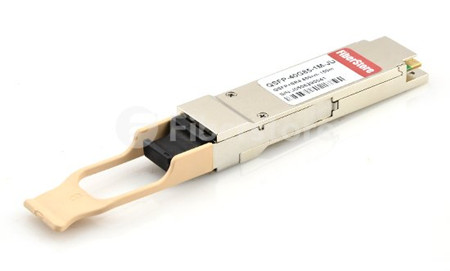Basic Information About Fiber Optic Transceiver
Optical fiber transceivers are also called fiber optic transmitter and receiver, which are used to send and receive optical information in a variety of different applications. The role of the optical module is photoelectric conversion. These optical modules are scalable and flexible in their use, and this is why they are preferred by designers. Here is what you need to know about the basics of fiber optic transceivers.
Fiber Optic Transmitters and Receivers
Fiber optic transmission system consists of a transmitter on one end of a fiber and a receiver on the other end. The transmitter end takes in and converts the electrical signal into light, after the optical fiber transmission in the fiber cable plant, the receiver end again converts the light signal into electrical signal. Both the receiver and the transmitter ends have their own circuitry and can handle transmissions in both directions. Fiber optic cables can both send and receive information. The cables can be made of different fibers, and the information can be transmitted at different times. The following picture shows a fiber optic datalink.

Sources of Fiber Optic Transceiver
There are four types of fiber transmitters used to convert electrical signals into optical signals. These sources of fiber optic transmitters include: distributed feedback (DFB) lasers, fabry-perot (FP) lasers, LEDs, and vertical cavity surface-emitting lasers (VCSELs). They are all semiconductor chips. Take QSFP-40G-UNIV as an example, it is Arista QSFP-40G-UNIV compatible 40G QSFP+ transceiver. It uses DFB lasers as sources for fiber optic transmitters, which are used in long distance and DWDM systems. DFB lasers have the narrowest spectral width which minimizes chromatic dispersion on the longest links.

The choice of the devices is determined mainly by speed and fiber compatibility issues. As many premises systems using multi-mode fiber have exceeded bit rates of 1 Gb/s, lasers (mostly VCSELs) have replaced LEDs. Fiber optic transceivers are reliable, but they may malfunction or become out-dated. If an upgrade is necessary, there are hot-swappable fiber optic transceivers. These devices make it easy to replace or repair without powering down the device.
How Fiber Optic Transceiver Works?
Information is sent in the form of pulses of the light in the fiber optics. The light pulses have to be converted into electrical ones in order to be utilized by an electronic device. Thanks to the conversion by fiber optic transceivers: In its fiber optic data links, the transmitter converts an electrical signal into an optical signal, which is coupled with a connector and transmitted through a fiber optic cable. The light from the end of the cable is coupled to a receiver, where a detector converts the light back into an electrical signal. Either a light emitting diode (LED) or a laser diode is used as the light source.
Packaging
Optical fiber transceivers are usually packaged in industry standard packages like SFP, SFP+, XFP, X2, Xenpak, GBIC. According to the fiber type it connects to, there are MM (multi-mode), SM (Single-mode), as well as WDM fiber (CWDM, DWDM modules). The SFP modules support up to 4.25 Gbps with a connector on the optical end and a standard electrical interface on the other end. The QSFP are for 40 Gigabit networks using a LC duplex connection. Take compatible Brocade 40G-QSFP-LR4 as an example, it supports link lengths of 10km on single-mode fiber cable at a wavelength of 1310nm.
Summary
Keep in mind that fiber optic transceiver has two ends. One has an optical cable plug and another for connecting an electrical device. Each aspect of the transceivers is necessary to properly deliver a signal to its destination. Be aware of all aspects of fiber optic transceivers to purchase what you need for your application. Fiberstore supplies a wide variety of 40GBASE QSFP+ transceiver modules for you to choose from. More detailed, please contact us directly.